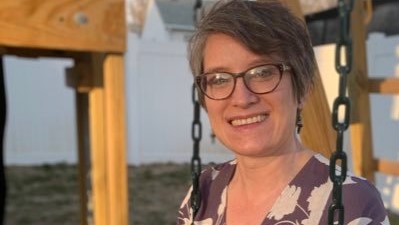SD Discovery Center Educator Named Society for Science Advocate

Bree Oatman, Education Director for the South Dakota Discovery Center in Pierre, is one of 66 educators across the nation to be selected to serve in the Society for Science’s Advocate Program. This award includes a $3,000 stipend for helping STEM students conduct research and compete with it.
“It’s exciting for us because we want to be able to do more to engage youth in authentic inquiry and research experiences,” Oatman said.
The Society for Science Advocate Program, which is in its seventh year, aims to see underrepresented groups become engaged in STEM.
“The goal of this Society for Science is to really increase the number of students who are typically not engaged to become engaged in these types of programs,” Oatman said.
Oatman, who has her doctorate in science education, works for the South Dakota Discovery Center to create curriculum for K-12 classrooms across the state and lead outreach activities. She also leads partnerships with outside organizations to increase STEM education, facilitates teacher trainings, and works on grant writing to support the center’s mission.
Oatman is passionate about equitable and inclusive STEM education and has worked on related projects throughout her professional career.
“I am particularly interested in figuring out how to remove barriers for Native American students in particular and [for] rural students who are isolated geographically and under-resourced in their schools,” Oatman said.
At the Discovery Center, Oatman and colleagues hosted an SD EPSCoR Summer Research Institute, and she helped with the Institute at Oglala Lakota College. She mentored a dozen Native American students from the Lake Traverse, Eagle Butte, Lower Brule, Rosebud, and Pine Ridge reservations with research projects this summer. Oatman also helped with the STEM modules available to teachers through SD EPSCoR.
A Society for Science advocate’s job is to help three to five students move forward in their research projects, meet deadlines, gather materials, and enter competitions or presentations. The advocates also connect with each other to form a network of science and engineering diversity advocates.
“When we submitted the application, we knew what we would be doing this summer with [SD] EPSCoR funds in supporting youth doing research projects,” Oatman said, “and we thought that this would be a great opportunity to continue expanding that work and increasing that capacity for students to be able to do STEM research.”
With her stipend, Oatman plans to start a science fair for students in the Pierre area. Stanley County schools’ middle- and high-schoolers and the eighth-graders at Georgia Morse Middle School are already in. Although she hasn’t officially given the project a name, she said she might call it the “Oahe Youth Research Symposium.”
This competition for students would pique their interest in STEM and get them thinking like a scientist, Oatman said. She added that these competitions, which are a main part of the Society for Science Advocate Program’s goals, are important for kids because they encourage them to reach a goal, require a more rigorous effort, facilitate communication skills, and show the reality of being a scientist — paperwork and all.
From there, Oatman’s goals expand. Statewide, national, international participation are all on the table for students.
“So, right now, it’s get a science fair going and help the youth in our community learn what research entails,” Oatman said. “Then, from there, get them to keep branching out into more competitive competitions or opportunities.”
The nearby Brookings regional science fair will be open to students who want to keep presenting, or virtual fairs are another option. Oatman hopes her science fair will open the gates for geographically isolated Pierre students to make the trip to other fairs.
Aside from arranging the event, Oatman also hopes to help teachers directly. The Discovery Center is updating its curriculum kits for teachers with modern, culturally integrative additions. Her stipend will also help her create a roadmap for teachers to organize their own science fair or help kids get research going in the classroom.
So, although the Society for Science program only lasts a year, Oatman and the Discovery Center are looking to long-term goals in continuing this project.
The kick-off for her science fair will come in October, when she’s hoping to gather previous SD EPSCoR Science Communications Fellows to present to the kids and get them thinking about their own projects.
The competition will be in March, just in time for interested students to attend the regional science fair.
Oatman knows exactly what she’s doing when it comes to organizing a science fair and facilitating kids’ research. Previously, as a teacher in Lead-Deadwood, she organized a science fair for her students and took them on a trip to regionals in Rapid City. Then, she and others partnered to do a blind peer review process on the students’ research papers. Her hope is to create a peer-reviewed youth science journal for South Dakota.
And, of course, her Society for Science project fits right in with the South Dakota Discovery Center’s vision.
“Our goal is to build capacity for STEM education and college and career readiness in South Dakota for STEM careers,” Oatman said. “That is our big ‘pie in the sky dream’ — to be able to do that in however many ways that needs to happen.”
 National Science Foundation RII Track-1 Project:Expanding Research, Education and Innovation in South Dakota
National Science Foundation RII Track-1 Project:Expanding Research, Education and Innovation in South Dakota